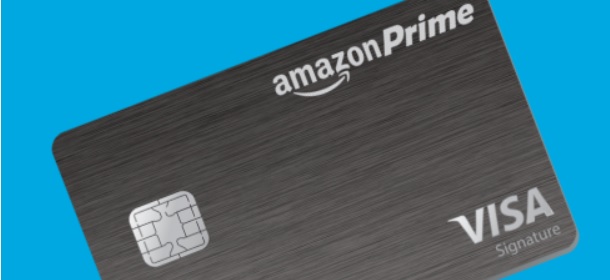NOTICE: This post references card features that have changed, expired, or are not currently available
Starting today, Amazon Prime Members can earn 5% back at Whole Foods with their Chase Amazon Prime Rewards Visa (non-Prime members can earn 3% back with the Chase Amazon Rewards Visa). While this isn’t necessarily the best return on grocery store spend, it might be useful if you don’t have a card that earns more compelling grocery store returns — and it additionally may be attractive as there is no rewards cap.

The Deal
- Amazon Prime members earn 5% back at Whole Foods with the Chase Amazon Prime Rewards Visa Signature card, non-prime members earn 3% back with the Chase Amazon Rewards Visa Signature
- Rewards are not capped
Quick Thoughts
These rates of return match what you earn in rewards at Amazon.com, which makes sense in light of Amazon’s acquisition of Whole Foods. Rewards points can be redeemed without a minimum at 1c each towards Amazon.com purchases with some exclusions (e.g. you can’t buy Amazon Kindle content or digital music/video content) or for cash back with a minimum redemption of $20. In addition to earning 5% back at Amazon and Whole Foods, the card earns 2% back at restaurants, gas stations, and drugstores and carries no annual fee. While this card wouldn’t be at the top of my list, it might make sense if you spend a lot at Amazon and also exceed the cap on better rewards at grocery stores. For example, you could earn 6% at on up to $6,000 at US Grocery Stores with the Blue Cash Preferred card. After the $6,000 cap, those purchases only earn 1% — and the Amazon Prime Rewards Visa could fill the void with 5% back (and no annual fee).
I also think this card is interesting for use on Amazon.com. While it’s true that you could buy gift cards at a discount or with a category bonus elsewhere, you forgo credit card protections when paying with gift cards. If you regularly buy items on Amazon.com for which you would prefer things like purchase protection (covers damage or theft for 120 days up to $500 per claim/$50K per year) or extended warranty protection, paying with a credit card and earning 5% back all year long might be attractive.
According to Doctor of Credit’s review of this card, it is not believed to be subject to the Chase 5/24 rule.
That said, the 2% categories aren’t particularly special since you can get 2% back (or better) everywhere with a number of other cards. If you already have this card and regularly shop at Whole Foods or regularly buy items they carry, the chance to earn an uncapped 5% there could certainly be useful.
H/T: Doctor of Credit


“For example, you could earn 6% at on up to $6,000 at US Grocery Stores with the Blue Cash Preferred card.”
Yes, but you’re only earning 4.4% after the $95 annual fee and that’s only if you spend $6000 exactly. If you’ve got a significant percentage of Whole Foods spending then you’ll come out ahead with the Whole Foods card and some no fee grocery cards for use elsewhere.
Great point on the math. I should have factored that in.
Of course, in that case, I would also consider the value of Amex Offers I’m likely to use. Personally, I’m likely to save well over the AF in Amex Offers. But you’re right that if you’re only going to spend the $6K at Whole Foods on the card, you’d be better off with the Amazon Visa.
Interesting. But I’ll still keep buying Whole Foods gift cards on Amazon with gift cards from Office Depot so I can get 5xUR and 3xJetBlue points. I consider that a 10% return.